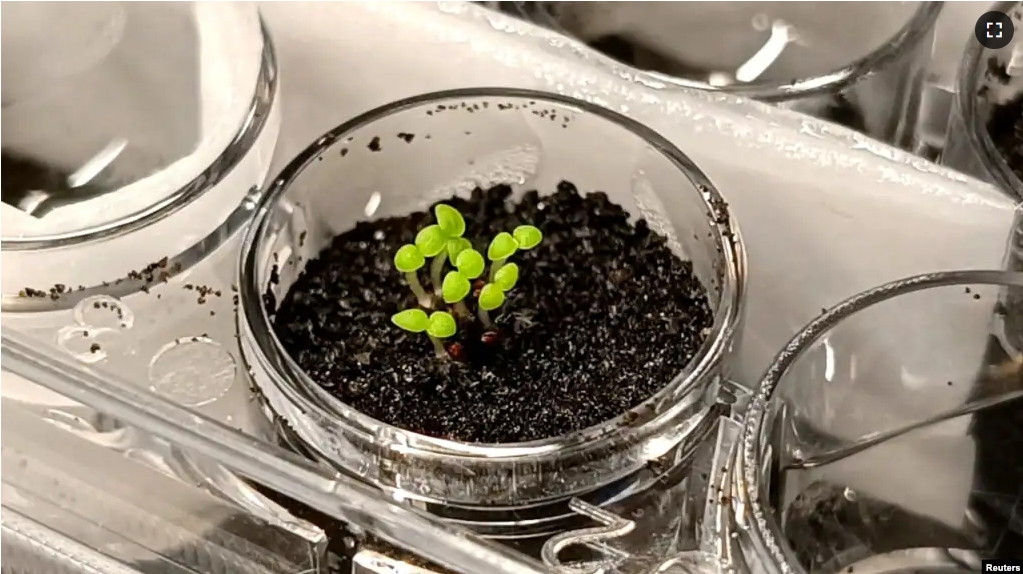If humans are to establish long-term bases on the moon, they will need food resources.
In recent years, scientists have been taking steps toward making moon agriculture possible.
Researchers in China said this month that they have found a way to turn soil, that is similar to lunar soil, fertile. They found that introducing special bacteria into the soil can increase the amount of phosphorus, an important nutrient for plants.
The Chinese scientists grew a plant that it is related to the tobacco plant in a laboratory in China. They used volcanic soil from the Changbai Mountains in Jilin province that is similar to moon soil, which scientists call lunar regolith. They treated the moon-like soil with three different kinds of bacteria. The researchers found that the plants raised in the bacteria-treated soil grew better than plants that grew in moon-like soil without the bacteria.
The researchers said the bacteria made the soil more acidic. This permitted phosphate from minerals to dissolve, making the nutrient available to the plants.
Researcher Xia Yitong of the China Agricultural University in Beijing was the lead writer of the study published in Communications Biology. Xia said the importance of these findings is that scientists may be able to use the bacteria in lunar regolith to grow crops in future greenhouses on the moon.
In a study published last year, researchers in the United States grew a flowering plant called Arabidopsis thaliana in small containers. Each container had a gram of moon soil collected during the NASA missions to the moon more than 50 years ago.
Arabidopsis, also called thale cress, is a plant widely used in scientific research. In the earlier study, Arabidopsis did grow, but not as well in soil from the moon as it did in volcanic ash from Earth, which the researchers used for comparative purposes. Their study suggests that soil from the moon could become more fertile with improvements.
The new research involved benth, or Nicotiana benthamiana, another plant often used in research.
In the most recent study, the scientists said they used volcanic material from the Changbai mountains to create soil with similar chemical and physical properties to lunar regolith.
The names of the three bacteria used in the study are: Bacillus mucilaginosus, Bacillus megaterium and Pseudomonas fluorescens. The researchers tested other bacteria as well, but those did not produce the same effects.
Xia said carrying food, oxygen, and water to people on the moon would be too costly. Xia added, “A greenhouse for plant cultivation on the moon could greatly reduce the need of Earth-moon transportation.”
A plant cultivation system on the moon could help meet long-term food and oxygen requirements for humans on the moon, Xia added. Plants produce oxygen from carbon dioxide in the process they use to create energy, called photosynthesis.
Xia said other plans to grow food on the moon that do not require soil are more costly because they require materials to be transported from Earth.
Xia said his team’s study met, “…the same goal [of plant cultivation] with much less consumption of carrying capability” compared to other plans.
I’m Gregory Stachel.
Will Dunham reported this story for Reuters. Gregory Stachel adapted it for VOA Learning English.
_____________________________________
Words in This Story
dissolve – v. to mix with a liquid and become part of the liquid
greenhouse – n. a building or part of a building that has glass walls and a glass roof and that is used for growing plants
mission – n. a flight by an aircraft or spacecraft to perform a specific task
cultivate – v. to grow and care for (plants)
consumption – n. the use of something (such as fuel)
capability – n. the ability to do something
